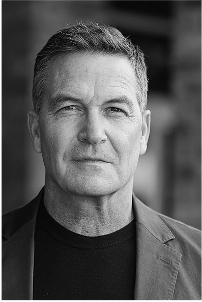-
![]()
Ed Barrows
How would you describe your working style or approach?
Cliché as it sounds, every person is different. So too are their circumstances. I partner with each person where they are—with respect and without judgement. I work on their behalf to collaborate in ways that address their particular need, but always in the spirit of who they are as a whole person.
-
![]()
Jared Bleak
How would you describe your working style or approach?
Focus on consistency and practice in application of leadership principles and techniques to bring real progress.
Work to increase awareness through gathering feedback, using data and improving self-reflection.
Creation and use of routines to drive daily growth and improvement.
Use of accountability throughout process to accelerate results.
-
![]()
Angela Chiarenza
How would you describe your working style or approach?
Growth comes from challenge, experience, and self- reflection. I create an environment for connection, dialogue, and understanding by starting with reflection and encouraging presence in order to acknowledge and overcome challenges. I meet individuals and groups where they are by listening, asking questions, and moving forward together. By inviting people to share a piece of their story, we ease into the process of building connections, then go deeper.
-
![]()
Scott Egbert
My clients describe me as: supportive, challenging, and goal-oriented. I seek to find the right blend of supportive and challenging to best serve each client in each session. We all need some of each, but some clients need more encouragement, and some need more accountability, so I try to customize my approach for each client's needs and desires.
I help my clients achieve meaningful outcomes by parsing their aspirational goals into specific behavioral ones. I partner with them to develop customized action plans (suited to their unique strengths and obstacles) to achieve your goals.
-
![]()
Richelle Hobbs
How would you describe your working style or approach?
My clients have described me as: purposeful, empowering and actionable; caring, insightful, probing, knowledgeable, resourceful, supportive, compassionate. I work with my clients in a co-active way to build self-awareness and develop mindsets, behaviors, patterns, routines, relationships and skills to help them show up in new ways and accomplish new things.
My approach to coaching is highly customized toward what is purposeful for the client. Our focus is always on applying awarenesses and learnings to daily decisions and habits to sustainably change behavior.
-
![]()
Michelle Hoover
How would you describe your working style or approach?
My job is to identify and play back to the coachee their own capabilities and potential — as well as bring to light areas of opportunity — and I do so in a direct way, with candor and empathy. My goal is to be of the greatest service to coachee in the pursuit of their growth and development. Together with the coachee, we identify the best ways to utilize the coachee’s strengths and develop new ones in service of the coachee’s goals and those of the client organization, as well.
-
![]()
Tom Hughes
How would you describe your working style or approach?
A coach needs to really be a partner to a coachee, so I try to meet you where you are and then tailor my approach to support you and your objectives. I can be clear and even provocative, but I’m never going to the the “tough guy” who gets in your face. I tend to use a blend of asking questions, soliciting your insights into yourself and your circumstances, and—where appropriate—sharing my experiences and insights from working with scores of clients over the past 25 years.
-
![]()
Marianne Lepre
How would you describe your working style or approach?
Clients describe me as extremely pragmatic with a focus on how the business really works. I have managed a P & L at IBM, managed global technology teams, and have experienced many of the challenges my clients live. People generally feel comfortable with me quickly because I have very few filters. Intuition is a gift I bring that I pair with empathy and authenticity.
-
![]()
Stuti Mandala
How would you describe your working style or approach?
Empathetic, experiential, insightful and empowering.
-
![]()
Kristen Norman
How would you describe your working style or approach?
As a coach I take a whole person approach that is focused on building a person’s skill set, a strengths based approach. In mentoring I teach leaders how to negotiate and communicate with their teams in an effective way through using real time scenarios as it applies to negotiation skills and theories.
-
![]()
Kevin Rolston
How would you describe your working style or approach?
I am known for being a deeply intuitive and perceptive coach. My style is grounded, practical and vitalizing. My empathic awareness helps me quickly identify precisely where leaders are stuck as well as the modality of coaching that will suit them best.
-
![]()
Jason Sackett
How would you describe your working style or approach?
My coaching style is facilitative, non-directive, strengths-based, collaborative, and client-focused but stakeholder inclusive. My clients report that I have a near-eidetic memory for their stories, am uncommonly accepting and non-judgmental, and raise their energy level without any noticeable effort. My approach is to create safety, hunt for strengths, then use brain-based techniques to build internal resources and maximize potential. I have a talent for detecting limiting assumptions, identifying more constructive perspectives, and helping clients stand to their full height.
-
![]()
Karen Strating
How would you describe your working style or approach?
Goal driven, but flexible. Coaching goals and success measures are designed upfront and are reviewed regularly to ensure progress to plan. At the same time, the process is flexible, allowing the client to set the direction and focus in each session. Overall goals are reviewed and measured throughout the process. Success is defined by the client and key stakeholders. Periodic alignment meetings help keep stakeholders (i.e. leader’s manager, HR if appropriate) involved and in support of the process. At the end of the engagement, I do a close out meeting with stakeholders and a written summary for the client.
-
![]()
Marla Tuchinsky
How would you describe your working style or approach?
I bring a broad organizational perspective along with a keen desire to listen and understand.
I believe coaching should be a collaborative exercise centered on you: I bring the process and the you bring the content. Using well-researched and practical methods, my structured coaching approach involves…
jointly defining outcomes
exploring behavior and context
creating a set of experiments to try over time, and
growing your skills, leadership behavior and self-awareness.
The specifics of each engagement depend on you – sessions are tailored to your needs.
-
![]()
Anna Marie Valerio
How would you describe your working style or approach?
My coaching style involves establishing trust with each client and understanding their strengths and challenges to enable them to create coaching goals for their success as leaders. Coaching discussions serve to foster the development of greater self-awareness and the leadership behaviors that add to their repertoire of adaptable responses in new and challenging situations. Holding stakeholder meetings (with client, manager, and, if appropriate, HR) at key points in the coaching engagement (for example, at beginning, mid-point, end) helps to promote the collaborative feedback, support and accountability to enable clients to achieve their leadership goals.
-
![]()
Lynne Walker
How would you describe your working style or approach?
Very pragmatic. My own leadership experience, along with my years of client coaching and leadership development engagements has definitely informed this approach. I always work with the client to identify one or two critical behaviors to focus on. These behaviors must meet two key criteria – first that they will have the significant impact on their overall leadership effectiveness and, as importantly, that they are areas where the client has energy to work (that is that they are committed to do the heavy lifting required).
I work hard to establish a very trusting relationship from the very outset to ensure the client feels safe to experiment, take risks and be vulnerable.
















